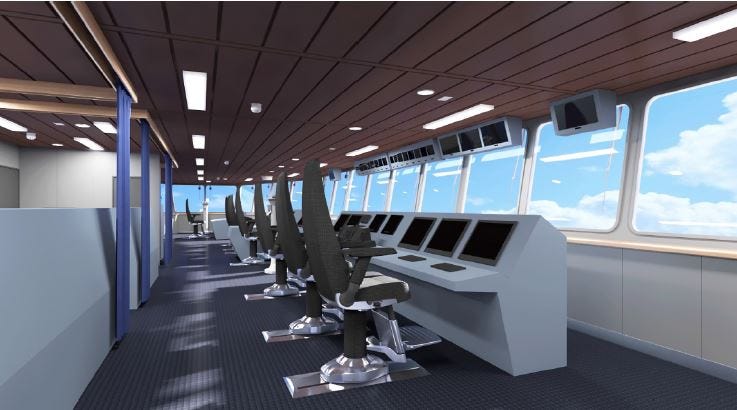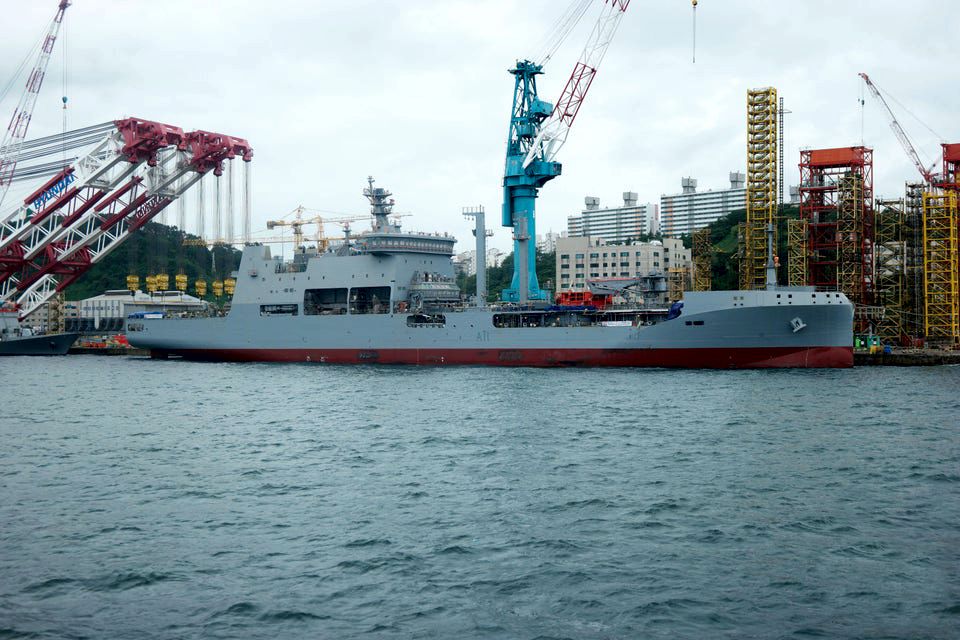The computer-generated renders are only representative, but they are the first tantalising look at what the future sailor can expect in terms of living and working aboard the RNZN’s largest ship in history.
The new fleet replenishment tanker Aotearoa, being constructed by Hyundai Heavy Industries in South Korea, will have an internal fit-out with quality of life very much in mind, says Commander James Routledge, Capability Requirements Lead for the project. At first impression, the comfort and space of the accommodation and mess areas is obvious, but what is different is that the Junior and Senior Ratings’ facilities look much the same as the Officers’ surrounds.

“In the main, it’s all the same,” says CDR Routledge. “The brief we had with the then Deputy Chief of Navy directed that there should be an egalitarian approach to the design.” That includes a commercial-grade wool-mix carpet and leather upholstery for the Junior Ratings, Senior Ratings and Officers’ messes, which CDR Routledge points out is far more practical. “Sailors are renowned for testing the durability of furnishings. Previously we used a wool/polyester material, sometimes with a Scotch-Guard spray to protect it, but it was never very effective. Leather is both hard-wearing and easy to maintain — and very smart, too.” He stresses that the designs are early representations, to help with décor-related decisions, and the final product will look even better.
Junior Ratings’ cabins will have four berths, while Senior Ratings’ have two. The Chief Bosun’s Mate and Warrant Officer Marine Technician will have single-berth cabins, as for all Officers’ cabins, apart from Junior Officer (Under Training) “Gun Rooms”, which are two-berth. All cabins have an ensuite. “They are all very well equipped. It’s been very carefully thought out. It’s going to be a very comfortable ship to serve in.”

For the first time for a New Zealand replenishment vessel, the Replenishment At Sea (RAS) parties will have a RAS Ready Room to store wet weather gear and prepare for underway refuelling operations. The space, which will include a toilet, shower and an area for briefings, is located right beside the deck where the RAS team carries out refuelling activities.
The ship will have a library and training centre, with eight workstations available for the crew. There is also a Role 1-equipped medical ward on board. Wi-Fi will be available throughout all recreation spaces, the Library, Conference Room and selected accommodation areas. The Commanding Officer’s accommodation incorporates a dedicated pantry, where a steward can receive meals from the Galley and Wardroom Pantry via a ‘dumb waiter’ system and pass through a serving hatch directly into the cabin’s dining area.

There’s also a gymnasium “…about the size of a small apartment”, CDR Routledge says. The days of physical training in a helicopter hanger should be gone, although he suspects the tradition may resume of setting up a running track that circumnavigates the ship, a distance of about 400 metres on the weather deck — a quarter-mile.
The Operations Rooms will have overhead displays, CCTV screens and a planning area with secure video conferencing facilities. There is also a separate Conference Room facility used both as a formal place for the CO to entertain, but also providing the necessary connectivity for partner agencies, such as police or Ministry of Foreign Affairs and Trade, to set up a dedicated operational space without interfering with the Ship’s own operational facilities.
Earlier this year CDR Routledge travelled to Antarctica on the Ocean-Giant, a commercially-contracted heavy lift cargo ship, to gain experience of operations in Polar waters. Aotearoa is designed to Polar Class 6 and it will, with appropriate ice breaker support, be capable of deploying down to Antarctica during the summer months. It is currently intended to conduct resupply operations of fuel, containers (and some passengers) to McMurdo Sound every other year in support of the government’s contribution to the Joint Logistics Pool of both the US and NZ Antarctic programmes.

He describes the spacious bridge as “a quantum leap in bridge design. To be honest, it’s going to be one of the most technologically advanced ships in the Navy in terms of communication and navigation.” In Korea, CDR Routledge has “walked” and “touched” some of the key working spaces, such as the Bridge, Ops Room and upper deck, using Virtual Reality, to check the anthropometric aspects such as being able to sit down in front of consoles and reach associated equipment.
“It’s very exciting. Aotearoa is going to be an outstanding ship, and it’s very special to be part of its design and build. My only regret is I’m too old to go back to sea; I would love to serve in this ship!”
The ship is planned for delivery in 2020 and scheduled for Operational Release in May 2021.





